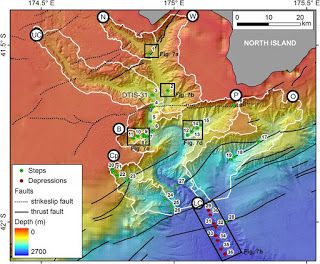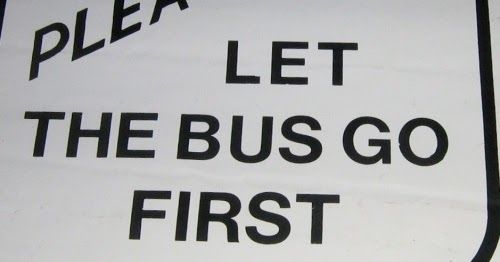Fares and Places
-
-
Te Herenga Waka—Victoria University of Wellington backs public transport campaign
- Victoria University of Wellington
- Te Herenga Waka—Victoria University of Wellington has joined dozens of organisations, becoming the first university to join the Aotearoa Collective for Public Transport Equity to support the Free Fares campaign.
- Accepted from VUW News feed by feedreader
- Tagged as:
- fares
-
-
-

Half price fares
- Snapper card
- Kia ora Wellington region, As you may know, on April 1st 2022, the half price public transport fare scheme takes effect. This means that all Snapper fares on bus, rail (Johnsonville Line only), and 30-day travel passes, will be 50% of their original price until June 30th 2022. For current and up to date fares, […] The post Half price fares appeared first on Snapper.
- Accepted from Snapper card news by feedreader
- Tagged as:
- johnsonville
- fares
-
-
-

Wellington City and Lower Hutt Cheated by Public Transport Rates
- Wellington Commuter
- * Understanding the funding of bus and rail services is an essential part of understanding the value of spending $301M on bus and rail services to different parts of the Wellington Region * Greater Wellington Regional Council (GWRC) collects about $70M in Transport Rates to help make up the difference between fares and bus/rail costs – but not all ratepayers are being charged equally.
- Accepted from Wellington Commuter feed by tonytw1
- Tagged as:
- lower-hutt
- fares
Lower Hutt, Lower Hutt City, Wellington, 5010, New Zealand (OpenStreetMap)
-
-
-
Metlink provides free buses for Hutt Valley community gatherings
- Metlink
- Metlink is providing free fares on buses this Wednesday (20 March) as people gather at community events in the Hutt Valley.
- Accepted from Metlink news by feedreader
- Tagged as:
- hutt-valley
- fares
Lower Hutt, Wellington, New Zealand (OpenStreetMap)
-
-
-

RE-BLOG KEITH JOHNSON: CentrePort Proposals to Scour Wellington Berths and Dredge Wellington Harbour Mouth need proper Multi-Criteria Appraisal
- Guardians of the Bays
- JUST BIGGER IS BETTER AS FAR AS TRAFFIC IS CONCERNED? By Keith Johnson While road transport increasingly grinds to a halt in Wellington and road rage is becoming common, partly consequent on Wellington City Council’s dog-in-the-manger approach to investment in roads, the Bigger is Better philosophy is receiving ringing endorsement from local authorities with respect to the aviation and maritime shipping industries. Much has been published on this website about Wellington International Airport’s Runway Extension Project – including an article by Dr Sea Rotmann which draws attention to the massive contribution of air travel worldwide to CO2 emissions. Maritime transport is also a major emitter. In this respect, Wellington Regional Council should be insisting upon a proper Multi-Criteria Assessment of the proposed dredging of Wellington Harbour by CentrePort. http://www.stuff.co.nz/business/industries/79692673/CentrePort-reveals-details-of-plans-to-dredge-7km-channel-in-Wellington-Harbour A Multi-Criteria Assessment would cover all dimensions of a major public investment: Cost-Benefit Analysis [including the Business Case] Economic Impacts Environmental and Safety Impacts Social and Distributional Impacts With the whole to be concluded with an over-arching summary of redlines and trade-offs. Looking at the current situation, the parallels between the CentrePort proposal and the Runway Extension Project are very interesting: Doubts about financial viability Optimistic multiplier-based ‘economic’ rather than business case justification Concern over who will eventually pay [ferry customers, GWC ratepayers] etc. Environmental concerns The one glaring difference is that Wellington ratepayers are not being asked to pay directly in the case of the Port. SOME ISSUES ON THE PORT PROPOSAL THAT NEED PROPER APPRAISAL Viability of Log Traffic growth as a major driver [with its associated road transport issues] http://maritimealumni.ac.nz/alumni/whats-the-latest/ The silt is potentially toxic: http://www.sandandgravel.com/news/article.asp?v1=4444 The cost could be anywhere between $20 million and $40 million: http://www.radionz.co.nz/news/regional/265225/dredging-plan-for-wellington-port The proposal could have adverse effects on recreational and commercial fishing, the recreational use of Wellington Harbour and artesian water pressure and purity in Eastbourne: http://wellington.scoop.co.nz/?p=76457 Wellingtonians will pay through their rate contributions to the Greater Wellington Council and possibly also through higher ferry fares to and from the South Island: http://www.stuff.co.nz/business/79886817/harbour-dredge-could-push-up-cook-strait-ferry-prices-shipping-federation Any possible relationship between the dumping of silt and its migration towards the unstable deep sea submarine canyons in Cook Strait seems unconsidered: http://www.nzherald.co.nz/nz/news/article.cfm Plus a couple of challenges on ‘shifting sands’ by ‘Old Saltie’ Jim Mikoz: Dredging, dumping, and the moving river of shingle and Why Centreport’s dumping sites are in the wrong places CentrePort’s Channel Deepening Project http://www.centreportbigpicture.co.nz/project-overview CentrePort is applying for consents to deepen the harbour to allow for ships with draughts of up to 14.5metres at the harbour entrance and the Thorndon Container Wharf. These consents would provide CentrePort the flexibility to dredge in one stage or a series of stages, allowing the port to deepen the channel only as required, in response to the size of ships actually visiting New Zealand. An extensive optimisation exercise was undertaken to identify the most cost effective design delivering the least amount of dredging for the best operational outcome. As Wellington is a naturally deep harbour, no deepening is required in the main harbour basin and the overall volume proposed to be removed is less than at other ports to achieve the same outcomes. At the harbour entrance consents are being sought that would allow the port to remove up to 6.0 million cubic metres of seabed sediment. The proposed disposal site is off Fitzroy Bay, in water approximately 50 metres deep. This site is a refinement of the existing consented disposal area. The main container berth and northern approach at Thorndon Container Wharf would also be deepened, with placement of that material, up to 270,000 cubic metres, in deeper water near the berth. Alternatives for disposal have, and will continue to be considered [hopefully].
- Accepted from Guardians of the Bays posts
- Tagged as:
- eastbourne
- thorndon
- fares
- runway-extension
Thorndon, Wellington, Wellington City, Wellington, New Zealand (OpenStreetMap)
-
-
-
REBLOG Croaking Cassandra: Further thoughts on the airport Part 1
- Guardians of the Bays
- Shortly after the release of the cost-benefit analysis of the proposed Wellington airport runway extension, prepared by Sapere for Wellington International Airport Limited (WIAL) I wrote a post in which I posed the question “If they build it, what if no one comes?” Since that post, I’ve been to one of the open day/public consultation meetings, have read and thought about the documents more thoroughly, and have read various pieces written by others, including the new one by Ian Harrison that I linked to yesterday. I have also had some engagement with Sapere and WIAL, which has helped to sharpen my sense of what the issues really are. The cost-benefit analysis is not a business case document. It has been prepared in support of a resource consent application. What I hadn’t known when I wrote earlier (and was advised of by Sapere) is that under the RMA the applicants will need to be able to demonstrate national benefits to get permission to fill in some more of Lyall Bay, to extend the runway. I’m sure that the cost-benefit analysis is not serving as a business case for Infratil, the major shareholder in WIAL. But since this project is generally accepted to be viable only if there is significant public funding, and any such funding can only be defended if there would be material net public benefits , the Sapere cost-benefit analysis is by default serving as something of a business case at present. If the numbers don’t stack up, neither the Wellington region councils nor central government should be putting any money into the project (beyond WIAL’s resources, and of course Wellington City Council is a 34 per cent shareholder in WIAL). In this post, I will offer a few thoughts on the plausibility of the assumed increase in international passenger traffic to/from New Zealand as a result of the extension. Extending the runway at Wellington airport could materially reduce the cost of some forms of international travel in and out of Wellington. If long-haul flights were offered, lower costs could result by reducing the time taken (eg. by eliminating the one hour flight to Auckland and the stopover time in Auckland, it might reduce the total time for a trip to Singapore (and onward points) by perhaps 2.5 hours). For those travelling anyway, those gains could be material – time has an opportunity cost. In addition, by allowing long-haul aircraft to fly into Wellington, the direct cost of international airfares in and out of Wellington could also be expected to fall – quite materially, if the numbers Sapere quotes are correct. Those gains apply not just to long haul routes themselves – a Wellington-Singapore direct fare should be materially cheaper than the current options via Auckland, Christchurch or Sydney – but also to trans-Tasman flights, as the longer runway would also facilitate used of wide-bodied aircraft on trans-Tasman routes (as for examples, the Emirates flights between Christchurch and Australia). Of course, simply building the runway extension does not bring about any of these savings. They depend on airlines finding it profitable to run additional services. And although international air travel has increased enormously to and from New Zealand in recent decades, provincial New Zealand is littered with the dreams of local authorities (airport owners) with aspirations to have an international airport. New Zealand has plenty of attractive places, but one main international airport. Wellington, of course, has a significant business market, and business travel is typically much more profitable for airlines than leisure travel. And unlike the predominantly leisure travel into Christchurch, the Wellington business travel probably isn’t very seasonal. So the idea the long haul flights into Wellington could be viable isn’t self-evidently absurd. But, on the other hand, the economic cost of making such flights technically feasible – lengthening the runway – is far higher than in many other places. At $1m a metre, it is considerably more costly than putting some asphalt on some more grassy fields in Christchurch. Wellington isn’t a natural place for a long-haul international airport. The WIAL proposal uses modelling by international consultants to estimate likely growth in traffic and passenger numbers with and without the extension. There are some questions about the baseline forecast, including for example around the potential future impact of climate change mitigation policies. But my main interest is the difference between these two – the increase in traffic that would result from the runway extension itself. It is hard to pick one’s way through all the numbers, but the bottom line appears to be that the cost-benefit analysis is done on the basis that by 2060 there will be an additional 400000 foreign international passengers per annum arriving in Wellington, and an additional 200000 New Zealand international departures per annum through Wellington[1]. Many of these are people who would otherwise have travelled via Auckland or Christchurch, so that the net gain in international travel numbers to New Zealand is around 200000, with an additional 100000 or so New Zealanders travelling abroad. Many of the gains are forecast to occur early in the period. Thus, by 2035, the analysis assumes an annual net gain to New Zealand of around 125000 international visitors (relative to the no-extension baseline). How plausible is this? The various reports highlight the phenomenon of “market stimulation” – putting on new air services tends to stimulate total passenger numbers. That shouldn’t be surprising. Not only do point-to-point services lower the cost of visiting a particular place, but marketing expenditure raises awareness of the destinations concerned. On the other hand, one can’t just take for granted that such market stimulation will render long haul flights into and out of Wellington viable. After all, there are plenty of cities around the world with few or no long haul flights. Closer to home, Rotorua is an attractive tourist destination and can’t sustain direct flights even to Sydney. What of Wellington? The modelling exercise involves lowering the cost of foreigners visiting Wellington – to some extent artificially, because the costs of providing the longer runway are not passed back in additional charges to those using long haul flights – but not the cost of them visiting New Zealand (since Auckland and Christchurch fares would stay largely unchanged). Any long-haul flights into Wellington will almost certainly be from cities that already have flights to Auckland (and possibly to Christchurch). Is it really plausible that an additional 200000 people per annum (or even 125000 by 2035) will visit New Zealand simply because they can fly direct to Wellington, or (in respect of trans-Tasman traffic) fly into Wellington more cheaply than previously? Perhaps I’m excessively negative on Wellington. I reckon it is a nice place for a weekend, but not a destination that many long haul leisure travellers would choose. What is there to do after the first two days? And there is little or nothing else in the rest of the bottom of the North Island. So it is plausible that lower fares resulting from additional competition would attract more weekend visitors from Australia. But no one is going to come for a weekend in Wellington all the way from China or Los Angeles. And since the principal attractions of New Zealand are either in the upper North Island or the South Island, how many more people are likely to come to New Zealand just because they can choose Wellington as the gateway for their New Zealand holiday? And what of New Zealanders travelling abroad? Since the costs of Wellingtonians (and others in the nearby areas) getting to desirable destinations abroad would be cheaper if there were direct flights from Wellington, it is credible that the total number of New Zealand overseas travellers would increase. In fact, whereas the modelling suggests twice as many new foreign visitors as new New Zealand international travellers (and in total there are twice as many international visitors to New Zealand as travelling New Zealanders), in this case I wonder if the putative new routes would not be more attractive to New Zealanders than to foreigners? One can illustrate the point with a deliberately absurd example: put on long haul international flights to Palmerston North, and they would be quite attractive to people in Manawatu (much easier/cheaper to get to desirable places like New York or London) but not very attractive at all to foreigners (for whom Manawatu has few attractions). But even if wide-bodied aircraft flights from Wellington did make overseas travel more attractive to New Zealanders, is the effect really large enough to be equivalent to one more trip every year for every 10 people in Wellington and its hinterland? And would the effect still be remotely that large if passengers (users) had to cover the cost of providing the longer runway (which should really be the default option)? Reasonable people can differ on these issues. In my discussions, a lot seems to turn on just how attractive people think Wellington is. I’m pretty sceptical that long haul tourists will ever come to New Zealand to see cities. Perhaps if one is thinking of visiting New Zealand cities, Wellington is more attractive than our other cities, but even if so Wellington still has the feel of being a logical gateway to nowhere much. It isn’t an obvious starting point for a “whole of New Zealand” trip, or a North Island one (given that most of the attractions are further north), or a South Island one. So I’m left (a) sceptical that the net addition to visitor numbers to New Zealand will be as large as the analysis assumes even if the users don’t bear the costs, and (b) suspecting that the boost to the demand for New Zealanders to travel abroad might be greater than the boost to the demand for foreigners to visit New Zealand. On that latter point, the experts point out that they assume that the new long haul services will be provided by foreign airlines, and that the evidence of recent new air services to New Zealand provided by foreign airlines is that they disproportionately boost the number of foreigners travelling. I have no reason to doubt the numbers, but I still wonder if the same result would apply to routes into Wellington. New flights into Auckland are often the first direct flights offered into New Zealand (as a whole) from that city or country. My impression is that “New Zealand” is the destination marketed to long haul passengers. But direct flights to/from Wellington do more to open up the world (more cheaply) to Wellingtonians than they do to open New Zealand to foreigners. And if so, would the foreign airlines be keen to offer the Wellington services at all? This post has been about the sort of increased passenger numbers that might be expected if the runway was extended. In some sense, that should be largely an issue for WIAL. If they can extend their capacity and attract sufficient users at a price that covers the cost of capital of WIAL and its shareholders, the rest of us might not care much (I’m not much bothered about environmental issues, although my family enjoys the waves at Lyall Bay beach). But the cost-benefit analysis being used to lure ratepayers and taxpayers into funding much of the proposed expansion suggests that there are very large economic benefits to New Zealand which cannot be captured directly by airlines or airports. I think they are wrong, and my next post will explain why. [1] From tables 5.11 and 5.12 in the InterVISTAS report.
- Accepted from Guardians of the Bays posts
- Tagged as:
- consultation
- fares
- runway-extension
- lyall-bay
Lyall Bay, Wellington, Wellington City, Wellington, New Zealand/Aotearoa (OpenStreetMap)
-
-
-
Cheaper bus fares start this weekend
- Peninsula News
- Bus fares are cheaper every weekend from this Saturday 28 November to Sunday 20 December on GO Wellington or Newlands Coach Services buses with $1 fares for one zone of travel, and a $2 adult fare or $1.50 child fare... Read More ›
- Accepted from Peninsula News posts
- Tagged as:
- newlands
- fares
Newlands, Wellington, Wellington City, Wellington, New Zealand/Aotearoa (OpenStreetMap)
-
-
-
Proposal for public transport fare increase
- Kilbirnie, Lyall Bay, Rongotai Progressive (Residents) Association
- Proposal for public transport fare increase Published on 27 February 2013 by Greater Wellington Regional Website Brief Summary A increase in Metlink bus, train and harbour ferry fares this year has been proposed by Greater Wellington Regional Council.Councillors decided on a proposal to increase fare revenue by two percent.
- Accepted from Kilbirnie Lyall Bay Rongotai Progressive Association posts
- Tagged as:
- fares
-
-
-
Councillor Ponter (GW) newsletter
- Newtown Residents' Association
- September newsletter from Greater Wellington Regional Councillor Daran Ponter. Includes updates on Bus Service Review and Increases in BusFares. D Ponter September 2012 Newsletter
- Accepted from NRA news
- Tagged as:
- fares
-
-
-

Fair Fares For Wellington
- Thorndon Residents Assocation
- Tony Randle, Chair, Johnsonville Progressive Association. No-one likes to raise public transport fares, especially when so many are reliant on this service. But these costs have increased so rail users can travel in new trains on upgraded track and use upgraded stations. The approach of the Greater Wellington Regional Council (GWRC) is to raise fares equally for both bus and rail users. It seems doubly unfair in raising fares on bus users who cannot benefit from the new trains when their own service will receive little service improvement. In effect, increased bus fares are being used to pay for increased rail costs.
- Accepted from Thorndon Residents Assocation blog
- Tagged as:
- fares
- johnsonville
- buses
-
-
-

More Places to Top Up in The Hutt Valley
- Snapper card
- A second wave of Snapper installations has hit the Hutt with nine new retailers getting their Snapper kit installed . And we've got Wellington Railway Station Bus terminus covered too.
- Tagged as:
- snapper-card
- hutt-valley
Lower Hutt, Wellington, New Zealand (OpenStreetMap)
-
-
-
Now We’re Flying!
- Snapper card
- We’ve had a busy week here at Snapper, rolling out the ability to pay for your bus fare by Snapper on Valley Flyer and Airport Flyer buses. The first Snapper-enabled bus left the Waterloo depot in the early hours of last Sunday morning and by lunchtime every Valley Flyer bus had been fitted out with Snapper equipment.
- Tagged as:
- snapper-card
- hutt-valley
Lower Hutt, Wellington, New Zealand (OpenStreetMap)
-
-
-
Snapper welcomes 8 new Merchants.
- Snapper card
- We are happy to announce 8 new Reload and Acceptor Merchants that have come on-board in the past week strengthening our network in the suburbs: Bay Foodkmarket, Island bay; Bay Discount Tobacconist, Kilbirnie; Molesworth Goods, Thorndon; Anitas Bookshop, Featherston St Adding to the Subway Launch the following sites will be using Snapper for its queue busting abilities: Subway Featherston St,
- Tagged as:
- kilbirnie
- island-bay
- thorndon
Thorndon, Wellington, Wellington City, Wellington, New Zealand (OpenStreetMap)
-
-
-
Rising Prices, Poverty and Peak Oil
- Bryan Pepperell - Back To The Future
- Come and hear about - bus fare increases - GST - child poverty - Peak Oil and say what you think we should do about these problems. Newtown Hall (Cnr Constable and Daniell Streets, Newtown) 10am Saturday 7 June There will be light refreshments afterwards. Issued by Campaign Against Rising Prices
- Tagged as:
- events
- newtown
- fares
Newtown, Wellington, Wellington City, Wellington, New Zealand (OpenStreetMap)
-
-
-
Bikes free on trains from July 1
- The Wellingtonista
- In an effort to encourage people to leave their cars at home, Greater Wellington has announced that from July 1 this year, bikes can ride on trains for free. At the moment, travelling by rail with your bike will cost you another adult fare. Sounds like a good idea to us.
- Tagged as:
- cycling
- paraparaumu
- trains
- fares
-
-
-
Friday 13th Zombie Party at Johnsonville
- Wellington City Libraries
- Tonight at the Johnsonville Library there will be a Zombie party (with pizza, not the usual zombie fare) - dress up as a zombie and win prizes! You will also receive 50 bonus SUBTXT points and more if you register a zombified friend. Come along at 6pm and join in the fun - more information here.
- Tagged as:
- events
- johnsonville
- zombies
- fares
-

